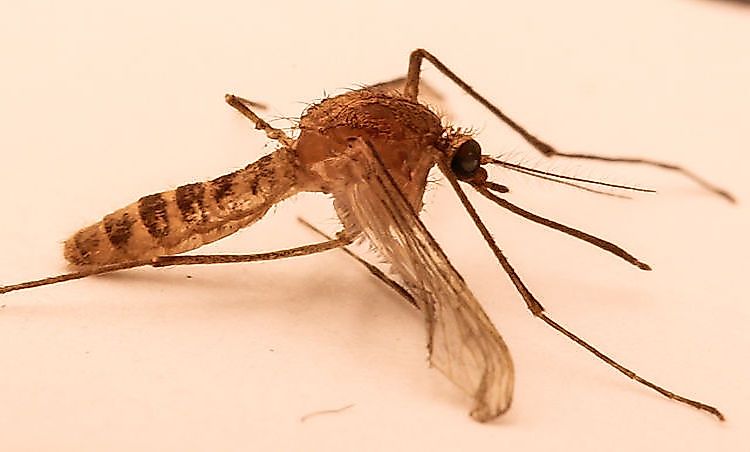What is the London Underground Mosquito?

Although this mosquito, classified in the genus Culex, has a worldwide distribution, its presence within the London Underground subway system first became notable during World War II in the time of the Blitz. The London Underground, built in the 19th century, has had an unintended consequence on the evolution of the mosquito species. One possible explanation for this is that after construction, the tunnels had been sealed off from the surface, trapping a population of mosquitoes. This physical barrier facilitated the specific evolution of the species.
Tracing The Origins Of The London Underground Mosquito
The mosquito was first reported in the Underground during the WWII blitz when the tube’s tunnels became overnight bomb shelters. During the course of the war, an estimated 180,000 people sought refuge in the Underground. While there, attacks from small pests such as flies, lice and fleas were so commonplace that mosquitoes did not receive special attention. It wasn’t until about 50 years later that a comprehensive study was undertaken on the insects by Kate Byrne and Richard Nichols. The Mosquito was first discovered in 18th century Egypt. From here, it has been suggested that it spread through colonial passages and trade.
The Life Of The London Underground Mosquito
The London Underground mosquito is referred to as Culex molestus, and has been found to be a genetic variant from the surface-dwelling Culex pipiens. While the Culex pipiens primarily feeds on birds, the C. molestus feeds on human blood, mainly humans and rats. The former species hibernates in winter while the latter does not, as the Underground has no seasons. The Culex pipiens mates in an area with a lot of space and creates big swarms for pairing and breeding. The C. molestus, on the other hand, does not require a lot of space to mate. For the Culex pipiens to lay eggs, it requires a blood meal, a factor which the Culex molestus does not require. The London Underground Mosquito has evolved so distinctly that it cannot interbreed with other mosquito species.
Distribution Of The London Underground Mosquito
The London Underground Mosquito is not unique to the London system but rather has a preference for underground constructions ranging from basements to water systems. The New York Subway has also recorded the species. It has also settled in such like enclosed systems including septic tanks, caves, and sewers in Western Europe, especially temperate countries such as Portugal and Spain. The mosquito has spread to as far as Australia, Africa, and Asia.
Surviving The Test Of Time
This species of mosquito has sparked interest across the world. Human beings have been long blamed for extinction of some species due to a range of detrimental activities on the environment they undertake. In this case, however, people have been credited with the formation of a new species. When the Underground System was constructed, it was primarily for transportation purposes. The system represented a new subterranean habitat, which created an environment for the species to thrive. Through the system’s construction, human beings acted as agents of natural selection in the context of a dynamic environment. The London Underground Mosquito evolved to keep up with human-induced change to the environment. Since similar systems continue to be constructed all around the world, the species is well-adapted to ensure their survival.











